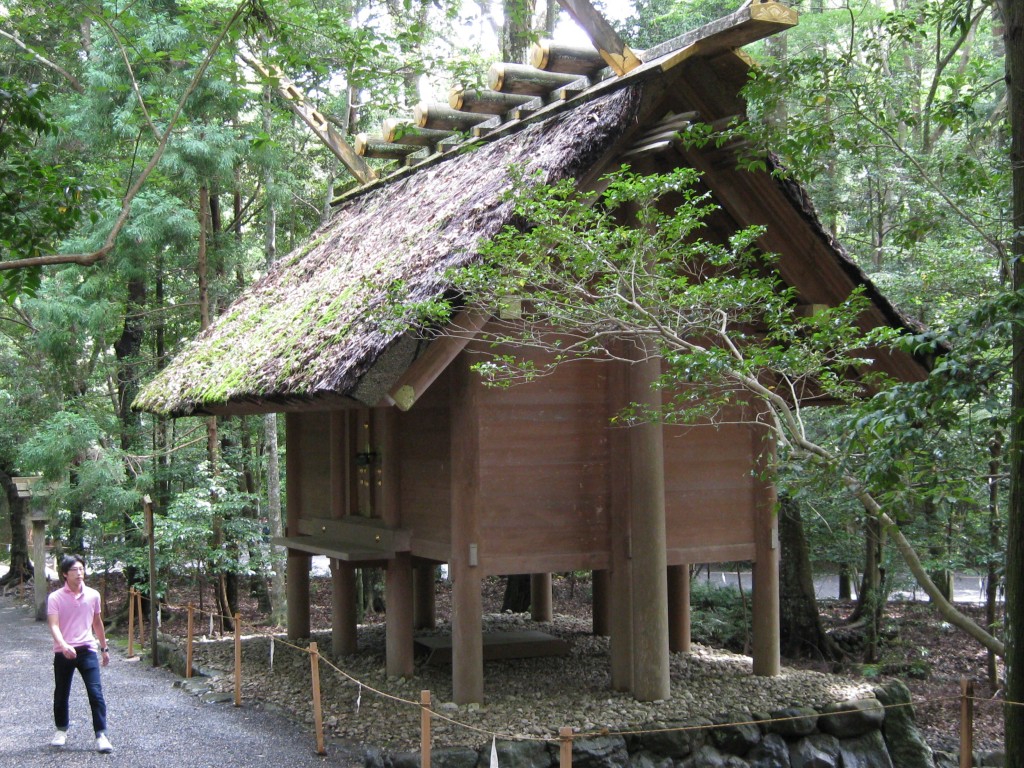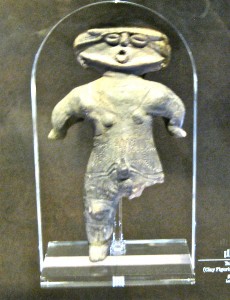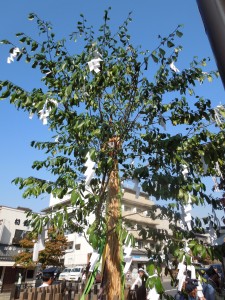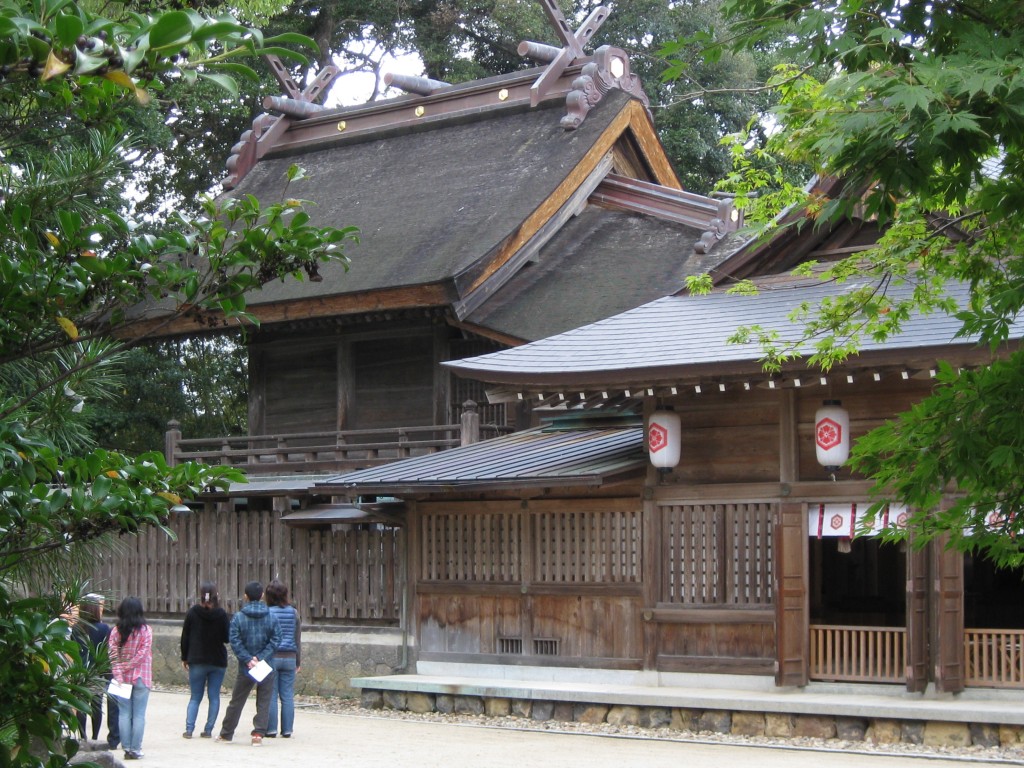This is Part 5 of an ongoing series about different aspects of Japan’s shrines. For the full, unabridged version, please refer to Shinto Shrines by Joseph Cali and John Dougill.
***************************************************************

The raised loghouse style, characteristic of Ise shrine buildings and reflecting the development from early rice stores

Example of a dōgu from Japan's Jomon Age (in the Kokugakuin museum)
Archeological discoveries are constantly challenging scholarly opinion about the earliest forms of Japanese culture. Humanoid figurines (dōgu) from this period point to fertility and or death related rituals, while stone circles point to some form of ritual. For now, it is generally agreed that the worship of kami and associated practices began in the Yayoi period (300 BC to 300 AD).
Though Japan originally had a hunter-gatherer and fishing culture, during the Yayoi period rice cultivation became widespread, and one of the main forms of kami worship was almost certainly bound to protection of the harvest. There is evidence of rituals to call the kami to a particular site from this time.
Generally, areas were chosen relating to water, mountains, or environs that inspired feelings of awe. Places related to the survival of the crop, protection of shipping, and others were also chosen. An area called a himorogi was marked off, perhaps by surrounding it with a rope or covering the ground with white sand or straw mats. The area was considered purified, and within it was placed an object for the kami to enter (yorishiro), usually a branch from a tree or a stone.

Example of a yorishiro for summoning down the kami
The location and consecrated ground were not permanent, but some sites became frequented by worshippers. One such place was Okinoshima, about thirty-five miles off the northern coast of Kyushu on an important shipping route to Korea. Excavations there have yielded objects used as offerings from as early as the fourth century, which show that rituals were carried out in open spaces, on large stones, and in caves.
Wooden construction and rice cultivation developed in tandem, and storehouses for rice were built that became places where the kami of the rice grain was venerated. This style of storehouse construction became one of the first styles of shrine construction called shinmei-zukuri. Indeed, Japan’s most important shrine, Ise Jingu, is constructed in this style.
Another prominent style is the taisha-zukuri, which most likely developed from the homes of the village chiefs who were charged with performing worship rites. (The homes were called miya, a word now used for shrines.) The most famous example of this type is Izumo Taisha.

The taisha style of shrine, here exemplified by Yaegaki Jinja, with a steep corridor leading up to the honden sanctuary on top of which are the characteristic 'chigi' crossbeams.

Leave a Reply